Now that the 2023-24 NBA regular season is over, we’re turning our attention to how each team should approach the offseason, including the draft and free agency. It starts with the 10 teams that have been jockeying for lottery position and the best chance of making the No. 1 pick in the 2024 NBA draft. Four more teams will join them after this week’s play-in tournament, followed by the 16 teams who participate in the 2024 NBA playoffs.
We’re breaking down the potential moves for each franchise, including a look at the state of each roster, finances, priorities for each front office, extension candidates to watch, team needs and future draft assets.
Key: ETO= Early Termination Option | P= Player Option | R=Restricted | T=Team Option
Jump to a team:
ATL | BOS | BKN | CHA | CHI | CLE
DAL | DEN | DET | GS | HOU | IND
LAC | LAL | MEM | MIA | MIL | MIN
NO | NY | OKC | ORL | PHI | PHX
POR | SAC | SA | TOR | UTAH | WSH

Eliminated in play-in tournament

2023-24 record: 46-36
Draft picks in June: No. 52 (via MIL)
Note: The Warriors are sending their own first to Portland if it is 5-14. They would retain it if the pick moves into the top four in the May 12 draft lottery.
Odds to retain their own first: 3.4%
Free agents: Klay Thompson, Gary Payton II (P), Dario Saric, Usman Garuba, Lester Quinones (R) and Jerome Robinson
State of the roster: The recent four-time NBA Champions are officially at a crossroads. The only thing guaranteed is that star Stephen Curry and coach Steve Kerr will be back when the regular season tips off in late October. Curry is viewed as untouchable and has two years left on his contract. Kerr recently signed a two-year, $35 million extension.
The task now for Kerr, owner Joe Lacob and general manager Mike Dunleavy Jr. is retooling what was once a championship roster while on a budget. Golden State spent a record-high $384 million in payroll, only to finish 10th in the Western Conference and lose in the play-in. Lacob has been outspoken about Golden State ducking the tax next season. “Our Plan 1, or 1A, is that we’d like to be out of the tax, and we think that we have a way to do that,” Lacob said on “The TK Show” with Tim Kawakami. “That kind of is the plan, not just under the second apron. … We don’t want to be a repeater.”
Since the 2013-14 season, Lacob and his ownership group have spent $677 million in penalties and have been in the tax four out of the past six seasons. Keeping the roster together is certainly doable. The Warriors have 11 players under contract, and their lone key free agent is Klay Thompson. Remaining below the $171 million tax threshold is a different story. Not including Thompson, Golden State is $2.7 million above the threshold. There could be a belief that another year of development from Jonathan Kuminga and Brandin Podziemski, along with bringing back the core three of Curry, Thompson and Draymond Green, would put Golden State back among the elite teams in the Western Conference. The Warriors had the fourth-most wins after the All-Star break (19-10) and went 10-2 to close out the regular season. But the “run it back” option could be fool’s gold and also prove expensive. For only the third time since 2013-14, the Warriors finished the season ranked outside of the top 10 in points per 100 possessions allowed.
The scenario that will not happen is Golden State hitting the rebuild button.
“We’re never going to bottom out, ” Lacob told ESPN’s Baxter Holmes in February. “I won’t settle for that. We’re not doing that.”
Offseason finances: From now until June 30, the Warriors are not allowed to send out cash in a trade, take back more money in a trade or aggregate outgoing salary. The three restrictions would be lifted if they get under the apron. The Warriors have up until June 24 to guarantee Kevon Looney‘s $8 million contract (there is $3 million guaranteed) and until June 28 for the $30.8 million owed to Chris Paul. If both players are waived, Golden State enters July with $137 million in salary — $34 million below the luxury tax and $54 million under the second apron. The futures of Thompson, Paul and Looney will determine which free agent exception is available. If the Warriors finish in the second apron after the 2024-25 season concludes, their 2032 first-round pick would not be allowed to be traded.
Top front office priority: If the goal is to save money, Paul and his $30 million non-guaranteed contract will likely get waived by June 28. It would be the first time Paul would become a free agent in his career. If the goal is to improve the roster, then Golden State should explore flipping the contract or even keeping the veteran. Paul led all reserves in assists per game and finished in the top-15 among all players. If Paul is traded, his salary cannot be aggregated with another contract on the roster and Golden State is not allowed to take back more money. Because the contract is non-guaranteed, the protection would need to match the salary Golden State receives.
For only the second time in his career, Thompson is set to become a free agent. But things were much different in 2019, when the Warriors were coming off a Finals loss in which Thompson tore his left ACL. There was no threat of him leaving or the Warriors going in a different direction. Thompson is 34 years old and came off the bench this season for the first time since his rookie season. He averaged 19.8 points and shot 42.8% on 3-pointers in 14 games as a reserve. Thompson ranked second on the team in points per game after the All-Star break, shooting 45.4% from the field and 41.2% on 3-pointers. Thompson is eligible for a four-year, $221 million extension, but it is not realistic to expect that. There are three options for Golden State and Thompson. They can reach a compromise on a short-term contract at considerably less money (two years and $60 million for example). Thompson could enter free agency and sign with a team that has cap space. The notable playoff teams with room include Orlando, Oklahoma City and Philadelphia. Golden State would have inexpensive options in Podziemski and Moses Moody to replace him. Or both sides could work out a sign-and-trade. However, high spending playoff teams like the Lakers and Clippers are not allowed to acquire Thompson because of the hard cap restriction.
Extension candidates to watch: Kuminga showed his potential in a March 20 win against Memphis, scoring 26 points (18 in the paint) and making an impact defensively with three deflections and holding the Grizzlies to 3-of-11 shooting as the closest defender per Second Spectrum tracking.
“I thought it was maybe the best game I’ve ever seen him play at both ends,” Kerr said. “He was playing with intensity defensively, he got deflections, he was guarding the ball.”
The Memphis game alone will likely not deliver Kuminga a five-year, $225 million rookie max extension this offseason, but the 21-year-old’s overall development from a rotational player (he played a total of 61 minutes in the playoffs last season) to starting 46 games should have Golden State discussing a long-term investment. He averaged career highs in points (16.1) rebounds (4.8) assists (2.2) and field goal percentage (52.9%).
Moody started nine games, averaging 12.6 points and shooting 39.5% on 3-pointers in those starts. The Warriors were 28-18 when Moody played more than 15 minutes this season. An extension for Moody should be in the $13-14 million range. However, if Thompson leaves in free agency, Moody is best served to play out the season, considering his role will expand.
Curry is extension eligible but because of the Over-38 rule, Golden State is allowed to only add one more season. A one-year, $62.6 million extension would keep Curry in a Warriors uniform through 2026-27.
Other extension candidates: Thompson (through June 30), Paul, Payton and Looney (as of July 9).
Team needs: Backup point guard if Paul is waived, a stretch 4 who can complement Green and versatile wings who can get out and run. The Warriors ranked 20th in points off turnovers and 28th in fast-break points.
Future draft assets: The Warriors are allowed to trade their 2025 first-round pick starting on the night of the draft. They have a maximum of two firsts allowable to move (2025/2027 or 2026/2028) in the next seven years. Golden State can also trade its 2030 first but only if it falls in between 1-20. The Wizards will receive the Warriors’ 2030 first if between 21-30. They are allowed to swap their own first in the next seven years. The Warriors have two second-round picks available.

Eliminated after regular season
Brooklyn Nets
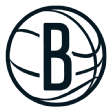
2023-24 record: 32-50
Draft picks in June: None
Note: Brooklyn’s 2024 first-round pick belongs to Houston after the 2021 James Harden trade. Brooklyn’s 2024 second-round pick belongs to Memphis (it was originally traded to Houston in a separate 2021 trade).
Free agents: Nic Claxton, Dennis Smith Jr., Lonnie Walker IV, Keita Bates-Diop (P), Trendon Watford (R) and Keon Johnson
State of the roster: While Brooklyn returns 11 players from the current roster, has the fifth-most tradable first-round picks of any team in the next seven years, and possesses cap flexibility in the future and trade exceptions to absorb salary, the Nets are searching for an identity, stuck somewhere between a rebuild and a retool.
Because of the 2021 Harden trade, they don’t control their own first-round pick for the next three seasons. The Nets’ 32 wins are the team’s fewest since 2017-18. In 2021, the team had championship aspirations with Kevin Durant, Kyrie Irving and James Harden. Turmoil followed — all three are gone, and they have been replaced with a roster lacking an identity. The Nets finished the season 23rd offensive and 20th in defensive efficiency. According to NBA Advanced Stats, the Nets have taken only nine charges all season, the fewest since the NBA began tracking charges in 2016-17. Mikal Bridges, the team’s best player, averaged 15.6 points and shot a career-worst 39.7% from the field after the All-Star break. Bridges had a career-high 23.8% usage rate. Additionally, Ben Simmons‘ $40.3 million salary next season represents 25% of the Nets payroll. Simmons has played 57 games since being acquired in 2022 and has undergone two separate back procedures. Creating that identity is now up to new head coach Jordi Fernandez. The former Kings assistant coach and current head coach of the Canadian national team will inherit the seventh-youngest roster in the NBA. However, five of the Nets highest paid players (Bridges, Simmons, Cameron Johnson, Dorian Finney-Smith and Dennis Schroder) will be at least 28 years old by the first day of the 2024-25 regular season. Fernandez is the fifth head coach hired since general manager Sean Marks took over in 2016.
Offseason finances: Because of Claxton’s $16.6 million free agent hold and four trade exceptions totaling $48 million ($20.4, $11.9, $9.5 and $6.8 million), expect Brooklyn to act as a team above the cap despite having only $133 million in committed salary. The Nets will have the $12.9 million non-taxpayer midlevel and $4.7 million biannual exceptions to sign a free agent or acquire a player in a trade.
Top front office priority: Establishing a price point with Claxton, who ranked ninth in blocks per game. Claxton has taken a total of 12 shots outside of 15 feet in the past two seasons, and 74% of his shots this season were within 5 feet. Considering the center position is the weakest group among free agents, Claxton could see his $8.5 million salary from this season double. Finally, what is the Nets’ appetite to get involved if the next All-Star does become available in a trade? Brooklyn can put together a package including Simmons’ expiring contract, young players such as Cam Thomas, and multiple first-round picks (Brooklyn is owed four unprotected first-round picks from Phoenix and Dallas). Ten out of Brooklyn’s 11 players under contract next season have salaries between $1.9 million and $24 million. The Nets could also take a conservative approach and reset the roster in the 2025 offseason. Depending on Claxton’s next contract and a possible extension for Thomas, Brooklyn could have up to $90 million in cap space in summer 2025.
Extension candidate to watch: Bridges has two years left (at salaries of $23.3 million and $24.9 million), and his current contract is considered one the best values in the NBA. However, Bridges has struggled this season as the Nets’ top option. He is eligible to sign a three-year, $112.9 million extension between Oct. 1 and Oct. 21. The Nets could also renegotiate Bridges’ contract starting on Oct. 18 if they create cap space. The Nets also have until Oct. 21 to extend Thomas, who averaged a career high 22.5 points this season. He also improved as a passer, jumping from five games with at least four assists last season to 26 such games this season. Because Thomas was drafted late in the first round, his free agent hold is $12.1 million. Signing him to a new contract greater than his hold would see Brooklyn lose cap space in the 2025 offseason.
Other extension candidates: Simmons and Day’Ron Sharpe.
Team needs: Finding a consistent playmaker to allow Bridges, Thomas and Johnson to get easier shots. The Nets lived and died by the 3-point shot, ranking 23rd in points in the paint.
Draft assets: Brooklyn owes Houston its first-round pick this season and in 2026 (both unprotected). The Rockets also have the right to swap firsts with Brooklyn in 2025 and 2027. The Nets do have three unprotected firsts coming from Phoenix (2025, 2027 and 2029) and a 2029 unprotected first from Dallas. The Nets also have the right to swap their own first or Philadelphia’s (if 9-30) with Phoenix’s in 2028. Brooklyn will receive a 2027 top-eight-protected first from Philadelphia if the 76ers convey their 2025 first to Oklahoma City. If the first is not sent to the Thunder, Philadelphia will then owe its 2028 first (if 9-30) to the Nets. The Nets are allowed to trade up to seven firsts. Brooklyn also has 11 second-round picks available.
Charlotte Hornets
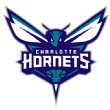
2023-24 record: 21-61
Draft picks in June: No. 3/4* (own) and No. 42 (via HOU)
Note: Charlotte is tied with Portland. The tie will be broken by the NBA, then the Hornets’ first-round draft position will be set by the May 12 draft lottery.
Odds for the No. 1 pick: 13.2%
Free agents: Miles Bridges, Davis Bertans (ETO), JT Thor (T) and Amari Bailey (R)
State of the roster: At his introductory news conference, new executive vice president of basketball Jeff Peterson laid out the vision for the roster. “Our main goal is to have sustained success,” Peterson said. “We don’t want to make the playoffs one year and then we’re out for another three or four years. We want this to be sustainable and turn this team into a consistent winner.” The sustainable part starts with identifying the right head coach for this roster and also the availability of LaMelo Ball. The Hornets have the fifth-youngest roster, with eight players under the age of 23, and there will be a heavy emphasis on player development in their head-coaching search. Ball played only 22 games this season and has missed a total of 134 since entering the NBA in 2020. The $205 million rookie extension he signed last summer begins in 2024-25. Coach Steve Clifford used 33 different starting lineups in 2023-24, 20 more than in 2021-22 when the Hornets won 43 games and reached the play-in tournament. The post trade deadline lineup of Vasilije Micic, Tre Mann, Brandon Miller, Bridges and Nick Richards was Charlotte’s most-used starting group this season. Micic and Mann were acquired on Feb. 8 from Oklahoma City. Peterson enters the offseason with a likely top-four draft pick to join Miller, an All-Rookie contender, and a clean financial slate to evaluate and then build a sustainable roster. Miller led all rookies in made 3-pointers this season and finished second in points per game, only behind Victor Wembanyama. Fourteen players are under contract and outside of Ball, no player earns more than $16 million. The only committed money in 2025-26 is Ball, Miller and Grant Williams.
Offseason finances: Including a pick in the lottery, Charlotte has $105 million in guaranteed salary, well below the $141 million salary cap. However, the future of Bridges and the decision on whether to waive Bertans will dictate how much flexibility the Hornets have in the offseason. Bridges has a $15 million free-agent hold and Bertans’ $16 million contract has only $5 million guaranteed. In addition to Bertans, Seth Curry ($4M), Bryce McGowens ($2M) and Aleksej Pokusevski ($2.3M) also have non-guaranteed contracts. Curry’s contract becomes guaranteed on June 28.
Top front office priority: Outside of hiring the next head coach and the draft, the big roster decision is the future of Bridges, who was arrested for felony domestic violence in June 2022, missed the 2022-23 season and pleaded no contest to the charge. He signed a one-year $7.9 million qualifying offer after contract negotiations stalled last July. Bridges averaged a career high 21.0 points this season but ranked in the 46th percentile at his position in effective field goal percentage and 40th percentile in 2-point percentage, per Cleaning the Glass. He also had career-highs in usage rate, rebounds and steals. Peterson has a decision on whether to reward the forward with a long-term lucrative contract or go in a different direction. The Hornets could structure a new contract similar to the one Houston gave Kevin Porter Jr., including yearly guarantee dates to protect the franchise if another off-court incident arose. There are seven teams with projected cap space, including Detroit and Utah. If there is no interest from teams with cap space and the Hornets’ intention is not to sign Bridges, both sides could explore sign-and-trade options.
Extension candidate to watch: The Hornets have only two players available for an extension, Thor and Cody Martin. It is unlikely either player will get extended. Martin has two years left, and Thor has a team option in 2025-26.
Team needs: Besides health, catch-and-shoot threats on the perimeter. The Hornets ranked 21st in 3-point percentage this season. Charlotte will also get a boost with a healthy Mark Williams. Opponents ranked second in rebounding percentage and shot 66% on shots less than 5 feet from the basket. Charlotte also finished 22nd in points in the paint scored.
Draft assets: In two separate trades, the Hornets picked up 2027 first-round picks from Miami and Dallas. The first from the Heat, acquired in the Terry Rozier trade, is top-14 protected and unprotected in 2028 if not conveyed in the prior season. The Dallas first is top-two protected. The Hornets also still owe a top-14-protected first to the Spurs. If it does not convey next season, Charlotte will send San Antonio 2025 and 2026 second-round picks. Charlotte has seven second-round picks available.
Detroit Pistons
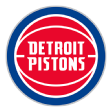
2023-24 record: 14-68
Draft picks in June: No. 1 (own) and No. 53/54 (via NYK)
Note: The Pistons’ first-round draft position will be set by the May 12 draft lottery.
Odds for the No. 1 pick: 14%
Free agents: James Wiseman (R), Simone Fontecchio (R), Evan Fournier (T), Malachi Flynn (R), Chimezie Metu (T) and Jared Rhoden (R)
State of the roster: After winning 20, 23 and 17 wins the previous three seasons, the Pistons fell to a franchise-worst 14 wins in 2023-24. They’ve won a combined 74 games since Troy Weaver took over as general manager in 2020. The futility on the court, however, does not have Weaver discouraged for the future. “We have a plan in place, a young core that’s showing that they’re growing and have a chance to be special players,” Weaver said after the February trade deadline. Weaver is expected to remain as the GM, but Detroit is expected to hire a president of basketball operations. The young core, however, looks more like that of an expansion team than a roster close to competing for a play-in spot. Of the seven players with guaranteed contracts next season, six (Cade Cunningham, Ausar Thompson, Jaden Ivey, Jalen Duren, Quentin Grimes and Marcus Sasser) are recent first-round picks who are still on their first contracts. The good news is the Pistons have a blank canvas to improve upon. Detroit once again will select in the top half of the lottery and is one of six teams with spending power in free agency.
Offseason finances: Detroit is in position to reshape its roster in free agency. The Pistons could have up to $60 million in cap space if Evan Fournier’s $19.9 million team option is declined and Troy Brown Jr. and Stanley Umude are waived. The room includes the draft hold for the second pick in the draft and cap hold for restricted free agent Simone Fontecchio. Detroit has until June 29 to exercise Fournier’s option and until June 30 to request waivers on Brown.
Top front office priority: There has to be a conversation within the front office on what direction to take this offseason. The easy answer would be to sign veterans to complement the young players, like Houston did last summer. The Rockets added Fred VanVleet, Dillon Brooks and Jeff Green to surround Jalen Green, Jabari Smith Jr. and Alperen Sengun. The Rockets also hired a defensive-minded coach in Ime Udoka. Houston improved its win total from 22 to 41 wins. But what is the selling point to free agents to play in Detroit outside of having the most money to offer? The Pistons finished the season with a franchise-worst record and returned eight players who averaged 17 minutes or more. Free agency continues to show that All-Star level players do not switch teams (VanVleet was the exception). Is it prudent to overspend on non-All-Star-level players like Tobias Harris, Malik Monk, Buddy Hield or even Miles Bridges? The last player Detroit signed to a contract greater than $20 million per season was Jerami Grant, and the forward was traded to Portland two years later for a first-round pick. Detroit ranked 26th in 3-point percentage, so signing Monk or Hield would address a need, but at a cost. The other option would be re-signing Fontecchio and then utilizing cap space or even the expiring contract of Evan Fournier (if the team option is exercised) to explore trades. The lineup of Ivey, Cunningham, Fontecchio, Isaiah Stewart and Jalen Duren outscored opponents by 8.9 points per 100 possessions. If the Pistons brought back Fontecchio, would it make sense to trade for the expiring $40.3 million contract of Ben Simmons if Brooklyn attached a first-round pick? There are 15 teams that are close to or above the luxury tax line or in the apron and could look to shed money. The Pistons entered last offseason with $30 million in room and traded for veterans Joe Harris and Monte Morris, adding three second-round picks in the process. Keep in mind that Detroit is not allowed to preserve cap space into the regular season. As part of the CBA, Detroit is required to spend $126.9 million in salary (90% of the cap) by the first day of the regular season. Including their first-round pick and the Fournier option, the Pistons would have $97 million in salary.
Extension candidate to watch: Has Cunningham done enough this season to show that he can be a franchise-type player? The 2021 No. 1 pick is eligible to sign up to a five-year, $225 million rookie extension. The contract could increase to $269 million if All-NBA language is included. After playing only 12 games last year, Cunningham played 62 games, averaging 22.7 points and 7.5 assists. He became the first Detroit player since Isiah Thomas in 1987-88 to record four 30-point, 10 assist games in a season. He also joined Thomas as the only Pistons player to record 200 points, 50 assists and 50% shooting over a seven-game span during the regular season.
Other extension candidates: Fournier and Grimes.
Team needs: Shooting. The Pistons ranked 26th this season in 3-point shooting. This is the fourth consecutive season Detroit ranked in the bottom 10 in 3-point field goal percentage.
Draft assets: Detroit owes a first-round pick to New York that is top-12 protected in 2025, top-10 protected in 2026 and top-nine protected in 2027. The next available first-round pick the Pistons can trade is in 2029. They have no incoming first-round picks via trade. They have nine second-round picks available.
Houston Rockets
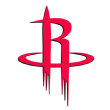
2023-24 record: 41-41
Draft picks in June: No. 9 (via BKN) and No. 43/44/45 (via GS)
Note: The Rockets will send their own first-round pick to Oklahoma City unless it lands in the top four in the lottery. The position of the pick coming in from Brooklyn will be determined by the lottery.
Odds for the No. 1 pick: 6%
Free agents: Reggie Bullock Jr., Jeff Green (T), Aaron Holiday, Boban Marjanovic, Jae’Sean Tate (T), Nate Hinton (R), Jermaine Samuels Jr. (R) and Nate Williams (R)
State of the roster: The 2024 offseason will be the most challenging for general manager Rafael Stone, because Stone now has the daunting task of taking a competitive roster and transforming it into a play-in and eventual top-six team in the Western Conference. “I do feel like we’ve obviously made a big jump in terms of being competitive this year. That was kind of goal one. Goal two is to take being competitive to winning more games,” Stone said in February. Houston won 41 games this season, an increase of 19 from last season. The Rockets were 17-11 after the All-Star break and ranked in the top 10 in defensive efficiency (last season they were 29th for the entire season). Houston returns 12 players, including the entire starting five, and has a likely top-10 pick courtesy of the Brooklyn Nets. Houston made it a priority last offseason to develop winning habits with its young players by signing veterans Fred VanVleet, Dillon Brooks and Jeff Green. Alperen Sengun will get consideration for Most Improved Player and played like an All-Star before he was hurt in March. The Rockets’ two first-round picks last year, Amen Thompson and Cam Whitmore, should be in contention for All-Rookie. And finally, after struggling most of the season on offense, Jalen Green averaged 27.7 points on 49% from the field in March. All positive signs for a team stuck in the bottom of the standings since trading James Harden in 2021.
Offseason finances: The trade to acquire veteran center Steven Adams all but eliminated the Rockets’ plan to have cap space. Houston will enter the offseason with $121.7 million in guaranteed salary but is over the $141 million cap because of $25 million in non-guaranteed contracts (Tate, Jeff Green and Jock Landale). Houston has until June 29 to exercise Tate’s $7.5 million team option and guarantee Landale’s $8 million contract. Jeff Green’s $8 million salary becomes guaranteed on July 11. The Rockets will have access to the $12.9 million non-taxpayer midlevel exception and $4.7 million biannual exception to use in free agency or acquire a player in a trade. The Rockets also have a $4.5 million trade exception.
Top front office priority: Besides rookie extensions for Sengun and Jalen Green (more on that below), there has to be collaboration between the front office and coaching staff on evaluating the offense without sacrificing the team’s defensive identity. Before the All-Star break, Houston ranked 24th in offensive efficiency, 26th in assists, 29th in 3-point percentage and 25th in 2-point percentage. After March 12 when Amen Thompson was inserted into the starting lineup (a result of the Sengun injury), the Rockets ranked fifth in offensive efficiency. Rockets coach Ime Udoka quickly dismissed the idea that the Rockets’ winning streak and Jalen Green’s offensive breakout were a result of Sengun’s injury. “We wanted to really increase the pace and get the 3s up and all those things don’t have anything to do with Alpi,” Udoka told “The Matt Thomas Show.” “When Jalen was struggling earlier in the year he had the same quality looks and Jalen started to read the game better. I think they can complement each other very well.” For the Rockets to go from Phase 2 to 3 of their rebuild, their offense needs to resemble the team in March and not the one before the All-Star break.
Extension candidate to watch: Both Sengun and Jalen Green are eligible to sign rookie extensions worth up to $225 million over five years. Will the Rockets need to prioritize one over the other? Sengun averaged career highs in points (21.1), rebounds (9.3), assists (5.0) and steals (1.2). He averaged 14.7 paint points this season, fifth most in the NBA. Sengun doubled his 3-point attempts this season but took a step back with his efficiency. The last time a center signed a rookie max extension was Bam Adebayo in 2020. Before the All-Star break, Green shot 41% from the field and 30.7% on 3-pointers. During the Rockets’ 11-game winning streak in March, Green averaged 30.2 points while shooting 50% from the field and 45% on 3-pointers. He was the youngest player to average 30 points over an 11-game winning streak, passing Bob McAdoo and Kareem Abdul-Jabbar. Stone has three years of work to evaluate Green, but during the first two years, Houston was playing out the string of games. Green has improved defensively under Udoka, holding opponents to 0.87 points per chance when defending isolations. That ranked in the top 10 among players to defend at least 175 isolations per Second Spectrum. Last season, opponents had a 1.08 points per chance when running isolations vs. Green.
Other extension candidates: Tate and Adams (as of Oct. 1).
Team needs: More playmakers. The Rockets ranked 26th this season in assists (24.7).
Future draft assets: The Russell Westbrook trade cost Houston its own first this season (unless it jumps into the top four via the lottery), but the Rockets recouped a top-10 pick from Brooklyn from the 2021 James Harden trade. The Nets will also send a 2026 unprotected first and Houston has the right to swap firsts in 2025 and 2027. Because of the Westbrook trade, Houston also owes Oklahoma City a top-four-protected 2026 first. The Thunder also have swap rights in 2025, if Houston’s pick falls outside the top 10. The Rockets have five second-round picks available.
Memphis Grizzlies

2023-24 record: 25-55
Draft picks in June: No. 7 (own), No. 39 (via BKN) and No. 57 (via OKC)
Note: The Grizzlies’ first-round draft position will be set by the May 12 draft lottery.
Odds for the No. 1 pick: 7.5%
Free agents: Luke Kennard (T) and Yuta Watanabe (P)
State of the roster: Memphis finished with its second-fewest wins in the past 16 seasons and missed the playoffs for the first time since 2019-20. Normally that would point to the Grizzlies taking a step back and facing a long rebuild, especially when considering 14 players from the current roster are under contract for next season. But injuries this season have put Memphis in a rare position entering the offseason. The Grizzlies led the league in games missed because of injury and ranked first with 51 different starting lineups. They set an NBA record with 33 players signed to contracts. Because of the injuries, Memphis signed 12 players to 10-day hardship exception contracts at different points of the season. Now, though, the Grizzlies will get to add a top-10 pick to a roster that returns Ja Morant, Marcus Smart, Desmond Bane and Jaren Jackson Jr. Those four players shared the court for just 4% of the team’s total possessions this season and held opponents to 104.2 points per 100 possessions. Sixth man Brandon Clarke tore his left Achilles in the first round of the 2023 playoffs and didn’t make his return until late March. All the injuries accelerated the development of Memphis’ recent draft picks and two-way players. Santi Aldama, Ziaire Williams, Jake LaRavia, Vince Williams Jr. and GG Jackson started a combined 107 games. Jackson averaged 17.6 points after the All-Star break and finished fourth among all rookies in points per game. He became the second-youngest player (LeBron James) to score 40 points in a game. Williams started 33 games, averaging 10.0 PPG and shooting 37.8% on 3-pointers.
Offseason finances: The Grizzlies traded center Steven Adams (who was out for the season with a knee injury) in a financially driven move (they also picked up three second-round picks) before the deadline. Even after removing Adams’ $12.6 million salary, the Grizzlies are still projected to be over the $171 million luxury tax line in 2024-25. Memphis has $160.5 million in guaranteed salary, which does not include Kennard’s $14.8 million or the $7.5 million salary for its first-round pick. The Grizzlies have until June 28 to exercise Kennard’s option. The contract becomes fully guaranteed on June 29. Kennard ranked second in 3-point percentage (45%) among players with four or more attempts per game. Yuta Watanabe has until June 29 to exercise his $2.7 million player option. Because of the new apron rules that start on April 15, the Grizzlies would trigger the $178.7 million hard cap in July if they take back more money in a trade than they send out.
Top front office priority: It starts with evaluating the different options leading up to the draft. The Grizzlies have a lottery pick but return a playoff-ready group of starters and a deep bench of recent draft picks. Adding $8 million in salary for a rookie would also likely send the Grizzlies into the tax. Does it make more sense for the Grizzlies to explore moving out of the lottery for a future first in another season? Or should Memphis look to attach the first to Kennard’s $14.7 million salary for a starting center to complement Jaren Jackson Jr.? They could also keep the pick and select a player like Connecticut’s Donovan Clingan. Per Cleaning the Glass, the Grizzlies were outscored by 7.4 per 100 points per possession this season when Jaren Jackson Jr. started at center. In the 63% possessions he spent at power forward in 2022-23, the Grizzlies were plus-10.5 points per 100 possessions.
Extension candidate to watch: Memphis is allowed to decline Kennard’s team option prior to June 28 and extend him at a lower starting salary in 2024-25. Smart has two years left on his current deal ($20.1 million and $21.6 million) and Memphis can extend his contract for an additional three seasons and up to $96.8 million. Smart played just 20 games this season, and missed 21 the previous season in Boston. Starting on Oct. 1, Jaren Jackson Jr. can sign a three-year, $106.2 million extension that would start in 2026-27. If he doesn’t sign an extension, he can become supermax eligible by being named All-NBA or winning Defensive Player of the Year next season. Aldama started a career-high 35 games, averaging 10.7 points and 5.7 rebounds. The deadline to extend Aldama, Smart and Jackson Jr. is Oct. 21.
Other extension candidates: Ziaire Williams
Team needs: Besides addressing the center position, the Grizzlies need a backup point guard behind Morant. Memphis could certainly stagger minutes and have Smart play point guard when Morant goes to the bench, but the Grizzlies went through the perfect storm of not having a reliable insurance policy when both players were out.
Future draft assets: The Grizzlies control their own first-round picks over the next seven years. They also have the right to swap their own 2026 first for the less favorable of Phoenix, Orlando and Washington. The Grizzlies also have the right to swap their own 2030 first for the less favorable of the Suns and Wizards. Memphis has six second-round picks available.
Portland Trail Blazers
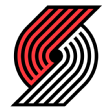
2023-24 record: 21-61
Draft picks in June: No. 3/4 (own), No. 13 (via GS), No. 33/34 (via CHA) and No. 40 (via ATL)
Note: Portland is tied with Charlotte for third. The tie will be broken by the NBA, then the Blazers’ first-round draft position will be set by the May 12 draft lottery. The pick coming from Golden State is top-four protected and would be retained by the Warriors if it lands in one of the top four spots after the lottery.
Odds for the No. 1 pick: 13.3%
Free agents: Moses Brown, Ibou Badji (R), Dalano Banton (T) and Justin Minaya (R)
State of the roster: The Trail Blazers knew there would be growing pains in the post-Damian Lillard era. Portland entered the regular season with six rookies under contract (including third overall pick Scoot Henderson), two second-year players (Shaedon Sharpe and Jabari Walker) and three new veterans (Malcolm Brogdon, Robert Williams III and Deandre Ayton). On top of that, Portland ranked second in most games missed due to injury, which forced coach Chauncey Billups to play 40 different starting lineups, the most since he took over as coach in 2021. The lack of roster stability led to Portland’s fewest wins since 2005-06. The Trail Blazers are at a critical juncture of their rebuild. It starts with the draft, where general manager Joe Cronin and his front office need to weigh if the roster is capable of taking on four draft picks. The Trail Blazers have 14 players under contract next season and have four selections in the top 40, including potentially two in the lottery. It is too early to tell if the Trail Blazers have a franchise player in Scoot Henderson or Shaedon Sharpe or if they will draft one in June. But the development of both players is critical in taking the next step. Henderson became the first Trail Blazers rookie since Lillard with multiple 30-point games. He also finished last among all players in field goal percentage on layups and dunks. Sharpe averaged a career-high 15.9 points but played only 32 games because of an adductor injury. His field goal percentage dropped from 47.2% as a rookie to 40.6%. And finally, there are financial decisions with the roster. The Trail Blazers are in a position where no lottery team should be: the luxury tax and first apron. Ayton, Brogdon, Jerami Grant and Anfernee Simons combine to earn 80% of the Trail Blazers’ salary cap.
Offseason finances: Portland has $159.5 million in guaranteed salary and ranks 12th in payroll before free agency even starts. The non-guaranteed contracts of Walker and Toumani Camara plus two first-round picks push Portland over the $171 million luxury tax threshold. Walker’s $2 million contract and Camara’s $1.9 million contract both become guaranteed on July 20. Banton has a $1.9 million team option that is not guaranteed if exercised. Portland will have the $5.1 million taxpayer midlevel exception available. The Blazers’ $8 million trade exception is not available if the acquiring salary pushes payroll above the first apron. The first apron will also get triggered if Portland takes back more money in a trade.
Top front office priority: Patience. In February, Cronin tipped his hand on the vision of the roster, saying “I want to give these guys a chance to grow and develop and not overly swing here in order to chase a playoff spot that’s unrealistic or a playoff spot that’s going to get us thumped right away. I want to make sure this is a quality build that’s very sustainable.” The Trail Blazers are in the unique position of rebuilding in the Western Conference with the fourth-youngest roster but also having veterans like Brogdon, Simons, Grant, Williams, Ayton and Matisse Thybulle under contract next season. Those six players would have trade value if Portland were to make them available. Ayton averaged 22.7 points and 12.5 rebounds after the All-Star break. Brogdon is a former Sixth Man of the Year who will be on an expiring $22.5 million contract. Williams has one of the best contracts ($12.4 million and $13.2 million) and is a Defensive Player of the Year candidate when healthy (he missed all but six games in 2023-24). Grant averaged 21 points, his most since 2020-21 and has four years and $133 million left on his contract.
Extension candidate to watch: Former second-round pick Jabari Walker doubled his minutes from 11.1 his rookie year to 23.6 this season. He scored in double digits 28 times and racked up 16 games of double-digit rebounds. Walker would be eligible to sign up to a four-year, $78.8 million extension once his $2 million contract is guaranteed on July 20.
Other extension candidates: Brogdon, Williams (as of July 30), Simons and Ayton (as of July 18)
Team needs: Shooting. The Trail Blazers ranked last in both 3-point percentage and effective field goal percentage.
Future draft assets: The Trail Blazers slowly have built back their first-round equity. Portland is owed first-round picks in 2029 from both Boston and Milwaukee. The Blazers also have the right to swap firsts with the Bucks in 2028 and 2030. Those assets, along with this year’s Warriors pick (if it doesn’t land in the top four) were acquired in trades that sent out Lillard and then Jrue Holiday. Portland still owes Chicago a first-round pick that has top-14 protection through 2028. The Blazers have six second-round picks available.
San Antonio Spurs
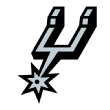
2023-24 record: 22-60
Draft picks in June: No. 5 (own), No. 35 (own) and No. 46/47/48 (via LAL)
Note: The Spurs’ first-round draft position will be set by the May 12 draft lottery. They will also get the Raptors’ first-round pick if it falls outside the top six after the lottery.
Odds for the No. 1 pick: 10.5%
Free agents: Cedi Osman, Sandro Mamukelashvili (R), Dominick Barlow (R) and David Duke Jr. (R)
State of the roster: Victor Wembanyama put together one of the best rookie seasons in NBA history, but despite the emergence of a top-15 player, the Spurs finished tied for their third-fewest wins in a season in franchise history. The youngest roster in the NBA (nine players under 23) ranked ninth in the fewest number of games missed due to injury and used only 22 different starting lineups this season. For comparison, the Memphis Grizzlies used 51 different starting lineups this season. The inexperience played a role in San Antonio’s 13-28 record in clutch games. The Spurs have 12 players under contract next season, and the clock to improve the roster started the night Wembanyama was drafted, not when the season ended on April 14. When Wembanyama was off the court, San Antonio allowed 117.3 points per 100 possessions compared to 111.2 when he was on the court. The Spurs were 3-8 in the games he did not play. “I don’t pretend to know what we’re going to do,” coach Gregg Popovich said in March. “We have a lot of possibilities ahead of us, whether it’s [having] money in the bank or draft picks or being creative tradewise. All those things are on the table. But aren’t they for every team? I don’t know why we’re any different. We’re just younger.” But the Spurs are not like every other team. They have a 20-year-old franchise player and nine tradable firsts in the next seven years.
Offseason finances: San Antonio is not like fellow rebuilding team Detroit when it comes to cap space. No player on the roster earns more than $30 million, but because of their high lottery picks, San Antonio has less than $25 million in room. Unless the Spurs are going to clear out significant salary, do not expect them to be a major player in free agency. If the Spurs have only their own first, the maximum room they can create is $24 million, which would mean waiving Devonte’ Graham and Charles Bassey. Graham’s $12.7 million contract becomes fully guaranteed on July 1. There is $2.85 million protected. Bassey ($2.5 million) becomes guaranteed on Aug. 1. The Spurs would have the $8 million room exception if they are a cap space team. If they operate above the cap, they will have the $12.9 million non-taxpayer midlevel exception and $4.7 million biannual exception.
Top front office priority: There are multiple questions the front office should ask this offseason. The first is what did this season teach us with Victor Wembanyama on the roster? San Antonio ranked in the top 10 of points allowed per 100 possessions with Wembanyama at center. Offensively, the Spurs struggled shooting the ball with Wembanyama at both power forward and center, shooting 34.7% on 3-pointers. The Spurs as a team ranked 28th in 3-point percentage and were 5-20 when they attempted at least 40 3-pointers. The second is which players on the current roster or in a trade complement him the best? The lineup of Wembanyama with Tre Jones, Devin Vassell, Jeremy Sochan and Keldon Johnson averaged 127.3 points per 100 possessions per Cleaning the Glass. Third, should San Antonio skip the steps in rebuilding and chase an All-Star type player, like Trae Young or perhaps Darius Garland, if either becomes available? That would represent a shift in philosophy in how San Antonio has constructed its roster dating back to Tim Duncan. The difference now is that San Antonio does not have another David Robinson to pair with Wembanyama. And finally, is taking a conservative approach a better strategy knowing the 2025 draft is stronger than the 2024 one? That would require buy-in from Wembanyama to be willing to spend another season at the bottom of the standings.
Extension candidate to watch: The Spurs extended Devin Vassell and Zach Collins this past year. This offseason there is no eligible player on a rookie-scale contract. The only two extension-eligible players are Osman (thru June 30) and Graham, who could be a roster casualty if the Spurs are looking to create cap space.
Team needs: Stability at point guard and perimeter shooting off the bench. The Spurs started Sochan at point guard before switching back to Jones. San Antonio was outscored by 19.2 points per 100 possessions in the games Sochan started at point guard. The Spurs ranked 20th in 3-point percentage among reserves.
Future draft assets: The Spurs rank behind only Oklahoma City (they are tied with Utah) in first-round picks over the next seven years. San Antonio is owed unprotected first-round picks from Atlanta in 2025 and 2027. The Spurs can also swap with the Hawks in 2026. If the Raptors’ pick does not convey in 2024, it would remain top-6 protected in 2025 (and 2026). San Antonio is also owed a first-round pick from Charlotte (top-14 protected in 2025, else two second-round picks) and Chicago (top-8 protected in 2026 and 2027). San Antonio also has the right to swap firsts with Boston in 2028 (top-1 protected) and Dallas in 2030 (unprotected). The Spurs have 15 second-round picks available.
Toronto Raptors

2023-24 record: 25-57
Draft picks in June: No. 6 (own), No. 16/17/18/19 (via IND) and No. 31 (via DET)
Note: The position of the Raptors’ own first-round pick will be set by the May 12 draft lottery. If it stays in the top six, they will retain it. If it falls outside the top six, they will send it to San Antonio. The pick owed by Indiana is tied with the Lakers, Orlando and Philadelphia. The tie will be broken by the NBA.
Odds for the No. 1 pick: 9%
Odds to retain the pick: 45.8%
Free agents: Bruce Brown (T), Jordan Nwora, Gary Trent Jr., Malik Williams (R), Immanuel Quickley (R), Garrett Temple and Jontay Porter (R)
State of the roster: For the third time in four years, Toronto enters the offseason out of the playoffs. The foundation of Fred VanVleet, OG Anunoby and Pascal Siakam no longer is on the roster. Anunoby and Siakam were replaced with Immanuel Quickley, RJ Barrett, Kelly Olynyk, Ochai Agbaji and future draft picks. The Raptors went 9-32 after the Siakam trade and finished with their fewest wins since 2011-12. “I don’t know [whether] to call this a rebuild or a reset or however we want to put it, but a normal rebuild with other teams takes … five, six years. Do we have the patience for that?” Raptors president Masai Ujiri said in February. A three-to-five-year rebuild starts with a stockpile of draft picks and a group of young first-round picks on their rookie contracts. The Raptors are not in that position. They are in a similar place to the Pacers retool that started in February 2022 when Domantas Sabonis was swapped for Tyrese Haliburton. Instead of the All-Star Haliburton to build around, the Raptors have a franchise player in Scottie Barnes. Barnes, Quickley, Barrett, Jakob Poeltl, Gradey Dick and Kelly Olynyk give Toronto with a foundation to work from. The Raptors also have $40 million in expiring contracts (Brown and Chris Boucher) to use in a trade either in the offseason or closer to the deadline. They could also enter free agency with close to $32 million if Brown’s option is declined.
Offseason finances: The Raptors are in position to have cap space for the first time since 2015 if they decline Brown’s option and renounce all their free agents except for Quickley. They have until June 29 to pick up Brown’s option. If the option is declined, Toronto could create up to $26 million in room. Quickley has a $12.5 million hold, and the Raptors can use cap space before re-signing the guard, who will be a restricted free agent. Not including a new contract for Quickley, Toronto has $93 million in guaranteed salary. If the Raptors remain over the cap, they’ll have the $12.9 million non-taxpayer midlevel exception and $4.7 million biannual exception. The Raptors also have two trade exceptions ($10.2 and $1.6 million). They would have the $8 million room midlevel exception if they operate as a cap space team.
Top front office priority: Do not expect the Raptors to lose their starting point guard in free agency again. Quickley is a restricted free agent and it is all but certain Toronto will tender him a one-year, $8.5 million qualifying offer by June 29. The real negotiation starts the day after the Finals end, when Quickley and the Raptors can begin discussing a new deal. In the role as full-time starter, Quickley averaged a career-high 6.8 assists and 18.6 points. The Raptors averaged 114.1 points per 100 possessions and were a plus-2.9 with Quickley sharing the court with Barrett and Barnes. A four-year, $109 million contract with a starting salary of $24.5 million would put Quickley in the middle of the pack of starting point guard salaries. The average starting point guard salary in 2024-25 is $27.8 million. The Raptors also have a decision to use Brown’s $23 million salary as a trade chip or to create cap space. Brown averaged 9.6 points but shot only 31.7% on 3-pointers. Because of the minimum salary rule, the Raptors need to spend at least $126.9 million of the salary cap by the first day of the regular season.
Extension candidate to watch: Expect Barnes to join Siakam, Chris Bosh and Vince Carter as the only rookie max extensions in franchise history. Barnes is eligible to sign a five-year, $225 million contract that could possibly increase to $269 million if All-NBA language is negotiated. Before breaking his left hand on March 1, Barnes was averaging a career-high 19.9 points, 8.2 rebounds and 6.1 assists. His 3-point shooting improved from 28.1% to 34.1%. Barnes was one of four players this season with multiple games of 30 points, 3 blocks and 3 steals, along with Anthony Davis, Shai Gilgeous-Alexander and Victor Wembanyama.
Other extension candidates: Trent (through June 30) and Boucher.
Team needs: Point guard depth and bench scoring on the perimeter. The Raptors could go with a combination of Liberty-Freeman and Brown (if his option is exercised) behind Quickley. Liberty-Freeman started four games in March, averaging 12.5 points. The Raptors ranked 28th in 3-point percentage from their reserves.
Future draft assets: If Toronto does send its 2024 first to San Antonio, the Raptors would then be allowed to trade their 2025 first starting on the night of the draft. If the first is retained, the next allowable year is 2027. The first owed to San Antonio is top-6 protected in 2025 and 2026. Toronto is owed a future first-round pick from Indiana (top-4 protected in 2026 and 2027). The Raptors also have four second-round picks available.
Utah Jazz

2023-24 record: 31-51
Draft picks in June: No. 8 (own), No. 28/29 (via OKC) and No. 32 (via WSH).
Note: The position of Utah’s own first-round pick will be determined by the May 12 draft lottery. If it falls outside the top 10, it conveys to Oklahoma City.
Odds for the No. 1 pick: 6%
Free agents: Kira Lewis Jr. (R), Talen Horton-Tucker, Kris Dunn, Luka Samanic, Johnny Juzang (R) and Micah Potter (R)
State of the roster: The main principles in Utah continue to focus on patience and player development. “Our goal is to continue to develop our players,” Jazz general manager Justin Zanik told “Roundball Roundup” in March. “Put them in a competitive environment. Have them experience playing meaningful games that mean something. And eventually I do not want to put a timeline on it.” The Jazz have an All-Star in Lauri Markkanen along with veterans Jordan Clarkson, Collin Sexton and John Collins. But they also have the second-youngest roster in the NBA. Eight players are under the age of 23, including Keyonte George, Taylor Hendricks, Brice Sensabaugh and Walker Kessler. Zanik and the front office have fought off the temptation of accelerating the rebuild in back-to-back years. The Jazz were a .500 team heading into the trade deadline, and it would have been easy to risk future assets just to sneak into the play-in. The Jazz went 5-25 after the deadline this season, after going 8-16 after the deadline in 2022-23.
Offseason finances: The Jazz enter the offseason as the only team with both multiple first-round picks in June and more than $40 million in cap space. Last year the Jazz used room to acquire John Collins and then renegotiate the contract of Jordan Clarkson. This offseason they could have up to $40 million if all their free agents are renounced and the non-guaranteed contracts of Darius Bazley and Kenneth Lofton Jr. are waived. Both contracts increase to $400K in protection if they are on the roster past July 25. Markkanen’s $18 million contract becomes guaranteed on June 28. If the Jazz stay over the cap, they will have the $8.0 million room midlevel exception.
Top front office priority: Besides the development of their own players, there is a three-step process to the offseason. The first is the June draft. Utah projects to have three picks in the top 31 and can take advantage of high-spending teams. Because second-apron teams are no longer allowed to buy draft picks with cash, Utah could flip the Clippers’ first or Pistons’ second for additional assets. The second is the direction with cap space. Utah could renegotiate Markkanen’s contract with cap space and then use the balance in free agency or trades. However, Markkanen is not renegotiation eligible until Aug. 6. If the Jazz pass on a renegotiation, Utah would need to spend at least $21 million by the first day of the regular season to meet the minimum salary requirement. And finally, how do the Jazz’s three highest-paid players — Sexton, Clarkson and Collins — fit in long-term? They ranked as the team’s second-, third- and fourth-leading scorers, behind Markkanen.
Extension candidate to watch: The Jazz have two options when it comes to a new contract for Markkanen. The unlikely path would be for Markkanen to sign a four-year, $113 million extension starting in July, with a team-friendly $25.2 million first-year salary. That’s less than what the forward could sign for as a free agent in 2025. The maximum starting salary next season is $44.4 million. The more viable option is for Utah to use available cap space to renegotiate and then extend his contract. The Jazz are allowed to increase his $18 million salary up to $42.3 million and then extend for an additional $202 million over four seasons. They are also permitted to decrease the renegotiated salary up to 40% and then extend off that number. Markkanen continues to play at an All-Star level and for a second straight season flirted with a 50/40/90 stat line.
Other extension candidates: Horton-Tucker (thru June 30), Collins and Sexton (as of Sept. 3)
Team needs: Besides an offseason of development for the recent first-round picks (George, Hendricks and Sensabaugh), consistency with the starting lineup. In the past two seasons, Utah has used 54 different starting lineups.
Future draft assets: The benefits of the Rudy Gobert and Donovan Mitchell trades will not come to fruition until 2025. Next year, Utah will have unprotected firsts from both Cleveland and Minnesota. The Jazz are also owed 2027 and 2029 unprotected firsts from Cleveland, an unprotected 2027 first from Minnesota and a top-5-protected 2029 first from Minnesota. Utah also has the right to swap firsts with Minnesota or Cleveland (top-8 protected) in 2028. Utah is also owed a top-5-protected first from the Lakers in 2027. The Jazz are tied with San Antonio for the second-most tradable firsts in the next seven years with nine. They have three second-round picks available.
Washington Wizards

2023-24 record: 15-67
Draft picks in June: No. 2 (own), No. 26 (via LAC) and No. 50/51/52 (via PHX)
Note: The Wizards’ first-round draft position will be set by the May 12 draft lottery.
Odds for the No. 1 pick: 14%
Free agents: Anthony Gill, Richaun Holmes (P), Tyus Jones, Tristan Vukcevic (T) and Jules Bernard (R)
State of the roster: Before training camp started, new president of basketball of operations Michael Winger refused to use the word “rebuild.” The Wizards went on to finish with the fewest wins in franchise history, lost at least six games in a row six different times (including 16 at one point) and had a defense that ranked 28th in efficiency. But they needed to bottom out after finishing below .500 in each of the previous five seasons and making the playoffs only once in that span. “We want to build the right way,” Winger told the media. “It is a very heavy lift. Hard decisions, a lot of patience, an intense focus on player development, an intense focus on research, and that’s what we are going to do.” The hard decisions included trading veterans Bradley Beal, Kristaps Porzingis, Chris Paul, Monte Morris and Daniel Gafford for draft compensation. The heavy lifting continues this offseason but under different circumstances. There is no $200 million Beal contract to unload. Instead the focus is on hiring a new coach, making two first-round picks, re-signing point guard Tyus Jones and the continued development of their young players, notably Bilal Coulibaly and the players selected in June.
Offseason finances: The Wizards prioritized acquiring draft assets (a first and two seconds) at the deadline in exchange for taking on salaries (Holmes and Marvin Bagley III) that extend into the 2024-25 season. Now with $115 million in guaranteed salary, $17.6 million of non-guaranteed contracts and an additional $14 million of first-round draft holds, Washington is projected to be over the salary cap. Landry Shamet‘s $11 million non-guaranteed deal becomes guaranteed if he is not waived by June 29. Holmes has until June 29 to opt in to his $12.9 million salary. Vukcevic’s team option deadline is also June 29. The Wizards should have the flexibility to remain below the $171 million luxury tax if they re-sign Jones and use their $12.9 million non-taxpayer midlevel exception. They also have the $4.7 million biannual exception. Washington has five trade exceptions: $12.5 million, $12.4 million, $9.8 million, $5.4 million and $3.5 million.
Top front office priority: To be blunt, the hiring of the next head coach is the most important transaction in the history of the Wizards. It will define Winger’s so-far short tenure. But what defines the right hire? A strong player development background? If the Wizards keep both first-round picks, they will have seven players under the age of 23. Someone with head-coaching experience? The ability to manage the locker room? The new head coach has to connect with Kyle Kuzma and Jordan Poole. Both players are under contract through 2026-27 and there has to be buy-in with both. We can point to the recent hirings and eventual turnarounds in Orlando, Sacramento, Minnesota, New Orleans, Oklahoma City and Houston. The difference is there is no De’Aaron Fox, Domantas Sabonis, Karl-Anthony Towns, Zion Williamson or Shai Gilgeous-Alexander on the Wizards’ roster. Instead the selling point is patience and a partnership. The patience comes with the realization that the current roster will turn over multiple times before there is stability. The Wizards finished in the bottom three in defensive efficiency and have 12 players under contract. The partnership is a multiyear plan of creating winning habits and identity on the court. The new head coach and front office will have a decision to make with Jones. The veteran had career highs in points (12.0), assists (7.3), field goal percentage (48.9%) and 3-point shooting (41.4%). Jones averaged 1.0 turnover or less for the ninth consecutive season, but he missed the last month of the season with a back injury.
Extension candidate to watch: Expect Washington to take an aggressive approach in extension talks with Corey Kispert, who averaged a career-high 13.4 points and played in 70 or more games for the third consecutive season. His 459 3-pointers are the most in a player’s first three NBA seasons in Wizards history. Per Cleaning the Glass, Kispert ranked in the 89th percentile among all forwards in points per shot attempt and effective field goal percentage. Kispert shot 76.0% in the restricted area and ranked 10th among players with at least 150 attempts.
Other extension candidates: Bagley, Shamet (as of Oct. 1) and Holmes
Team needs: Besides hiring the next head coach and finding NBA-level starters at every position except power forward, a jump in development for Coulibaly. The 19-year old averaged 8.4 points in 63 games this season. He started 15 games but shot only 26.6% on 3-pointers in those games.
Future draft assets: Give Winger credit for rebuilding the pool of draft assets. Since he took over last May, Washington has acquired two first-round picks, four years of picks swaps in the first round from Phoenix and 11 second-round picks. The first from Golden State in 2030 is top-20 protected. Washington still owes New York a first-round pick that is top-10 protected in 2025 and top-8 protected in 2026. If it hasn’t conveyed by then, Washington will send the Knicks its own 2026 and 2027 second-round picks. The earliest that Washington can trade its own first is in 2028.
